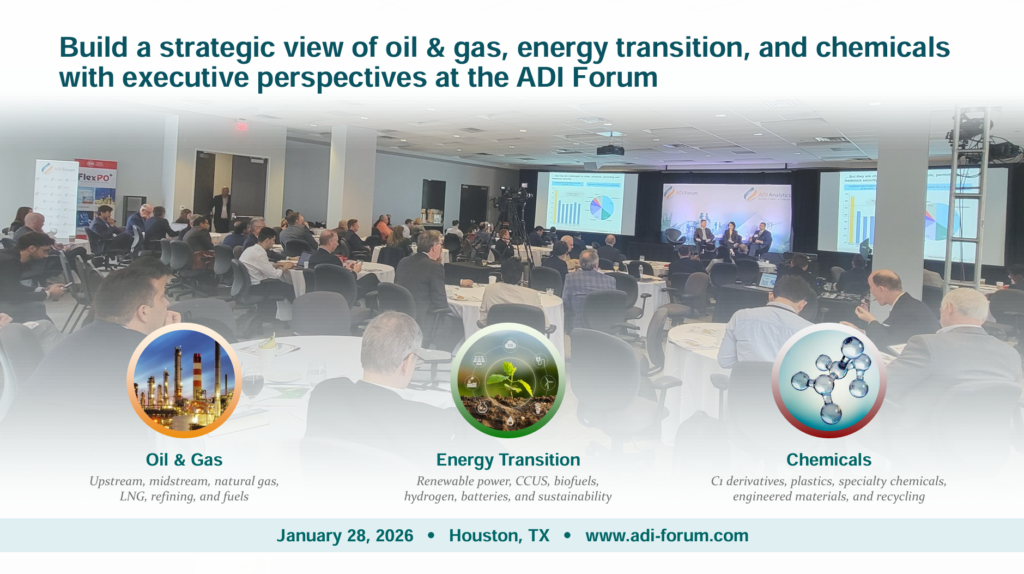
In 2025, the U.S. midstream oil and gas industry is expected to see growth opportunities, tied to rising hydrocarbon exports with new pipelines and export capacity planned to alleviate bottlenecks. Key trends to look out for include the following:
- The U.S. midstream sector will continue to grow as oil and gas production and exports rise to meet growing demand. President-elect Trump’s plans to expedite permits for pipeline projects and lift the pause on LNG export project approval could further boost the sector’s outlook.
- Permian oil production is expected to reach ~6.52 MMbpd by the end of 2025 with the play having sufficient takeaway capacity of over 7.5 MMbpd. However, at the current production growth rate, a capacity shortfall is expected by the end of the decade.
- While surging production continues to strain Permian gas takeaway capacity, the Matterhorn express pipeline, with 2.5 bcfd capacity, began operations in late 2024, which along with three new upcoming projects — Blackcomb with 2.5 bcfd capacity and the APEX and Hugh Brinson pipelines with 2 bcfd capacity each — anticipated to start in 2026, will help alleviate the bottleneck.
- Appalachian gas production growth will remain limited by takeaway capacity through 2025, although the Mountain Valley Pipeline, with a capacity of 2 bcf/d, which began operations in 2024, has eased some of the constraints.
- Permian NGL supply growth will be supported by new takeaway capacity, including the upcoming Bahia NGL pipeline with a capacity of ~0.6 MMbpd, EPIC’s Y-grade pipeline expansion adding ~0.08 MMbpd, and West Texas LPG pipeline expansion increasing capacity by ~0.42 MMbpd. Meanwhile Appalachia is tapped out without permitting reform.

- Several midstream players have plans to expand NGL fractionation capacity along the Gulf Coast. While ONEOK has announced the completion of MB-6, a 125,000 bpd NGL fractionator in Mont Belvieu, TX, Targa’s CBF Train 10, with a capacity of 120,000 bpd, and Enterprise product’s Frac 14, with a capacity of 195,000 bpd, are expected to come online next year.
- With ~90% U.S. crude oil exports departing from the Gulf coast, total U.S. exports are forecasted to increase from ~4.1 MMbpd in 2024 to ~4.4 MMbpd in 2025. The Gray Oak pipeline expansion, adding 120,000 bpd of capacity in 2025, will help boost Corpus Christi’s share of exports.
- U.S. LPG exports are expected to reach ~2.3 MMbpd in 2025, with export capacity remaining tight for much of 2025. The expansion at Enterprise’s Hydrocarbon Terminal, adding 120,000 bpd of LPG loading capacity, will help alleviate some constraints.
- U.S. net ethane exports are anticipated to rise from ~476,000 bpd in 2024 to ~520,000 bpd in 2025, driven by production growth and new export capacity set to come online next year. Notable projects include Energy Transfer’s expansion of its Nederland terminal, adding 250,000 bpd of flexible export capacity for ethane or other NGLs, and the first phase of Enterprise Products’ Neches River Terminal, which will add 120,000 bpd of ethane export capacity.
- Large midstream operators are expected to continue pursuing M&A opportunities to scale their operations, position themselves for expanding export markets, and optimize their assets as the sector matures. Notable midstream deals in 2024 included ONEOK’s acquisition of EnLink Midstream and EQT’s acquisition of Equitrans Midstream.
- Midstream companies are focusing on reducing GHG emissions and achieving sustainability goals, driven by investor pressure and stricter regulations. For instance, Kinder Morgan has adopted vapor recovery units to capture methane emissions, while Williams and Enbridge have been exploring various technologies to minimize pipeline blowdowns and methane venting, and Enbridge is partnering with Microsoft to use AI for asset optimization and emissions reduction.
Download ADI’s 2025 Midstream Outlook
ADI Analytics is a prestigious, boutique consulting firm specializing in oil & gas, energy transition, and chemicals since 2009. We bring deep, first-rate expertise in a broad range of markets including hydrogen, ammonia, and other chemical where we support Fortune 500, mid-sized and early-stage companies, government agencies, and investors with consulting services, research reports, and data and analytics, with the goal of delivering actionable outcomes to help our clients achieve tangible results.
We also host the ADI Forum, one of Houston’s distinguished industry conferences, to bring c-suite executives together for meaningful dialogue and strategic insights across the oil & gas, energy transition, and chemicals value chains. Learn more about the ADI Forum, which is chaired by Uday Turaga, Founder & CEO, ADI Analytics, at www.adi-forum.com.
Subscribe to our newsletter or contact us to learn more.



















